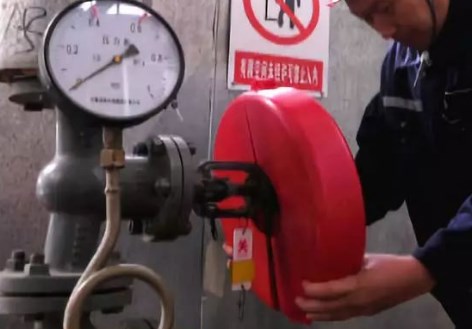The necessity of Lockout tagout
Heinrich’s law: when an enterprise has 300 hidden dangers or violations, there must be 29 minor injuries or failures, and 1 serious injury or death. This is the principle proposed by Heinrich for the management of insurance companies through the analysis of the occurrence frequency of work-related accidents. The ratio is 1:29:300, which is the ratio of death, serious injury, minor injury and no injury accidents. For different production processes and different types of accidents, the proportion may not be exactly the same, but this statistical rule shows that numerous accidents in the same activity will inevitably lead to the occurrence of major casualty accidents. Implement the Lockout tagout system
The workshop team leader prepared to fuel the grinder. After filling in the Lockout Tagout Test work permit, he cut off the power supply of the grinder, locked the distribution box, and hung the warning sign “No operation” on the distribution box. The whole operation was orderly and in one go. Strictly in accordance with the “Lockout Tagout safety management specifications” issued by the enterprise, when all the measures are done, he can rest assured to fuel the grinder. This is the whole process of implementing Lockout tagout system before equipment inspection and maintenance that I personally witnessed. I truly felt the seriousness of implementing safety rules and regulations, and more clearly realized the important role of standardized operation in safety management.
The purpose of “Lockout Tagout” is to select key points to isolate dangerous energy or materials and to take Lockout, tagout, cleaning, testing and other measures to prevent accidents caused by misoperation. “, “has formed a mutual supervision mechanism among professionals, which has been widely used in various inspection and maintenance operations. Before maintenance, electrical maintenance, process operation, equipment management, mechanical repair and other unit personnel together to confirm the on-site maintenance equipment, which equipment will be outage, which valves need to be closed, will make a detailed plan, and list. Before maintenance, perform Lockout tagout operations based on the list. The key of the lock should be handed over to the person in charge of maintenance work, with a label bag on the key, indicating where to open the lock. Whenever the lock is not released, it is impossible to open the switch or valve of Lockout Tagout, thus avoiding complications caused by misoperation. Each unlocking process also provides the operator with further reflection time to double-check whether the operation is correct.
Take electrical maintenance as an example. High-voltage electrical operators need to confirm the completion of maintenance work on site before unlocking the lock in the low-voltage distribution room to prepare for power transmission. Low voltage maintenance personnel will first unlock the high voltage switch, confirm that the high voltage has been sent, and then check whether the low voltage electrical equipment is running normally; The process operator plays a confirmation role in the process of sending power supply level by level, and takes safe operation measures to ensure that the power supply reaches the load end accurately.
The previous operation is usually the electrical operation personnel to remove the shutdown measures on the power operation, maintenance personnel complete the maintenance task is no longer concerned about the situation of high voltage power supply, process operators are also likely to get not detailed power supply, which may be misoperation to cause safety accidents. After the implementation of the “Lockout Tagout” system, through the mutual supervision and multiple confirmation of various professionals, clear operation records are conducive to the identification of operators and processes, which brings convenience to the maintenance and acceptance work. It not only ensures the safety of personnel’s operation, but also lays a foundation for the smooth completion of maintenance work. In fact, behind each accident is not an isolated event, although the injury may occur suddenly in a moment, but is the result of a series of events.

The Lockout tagout procedure is divided into nine steps: prepare, inform, stop equipment, isolate, Lockout tagout, confirm, test, confirm operation, check and restore. Each step needs to be carried out carefully by operators, especially in the fifth step Lockout tagout. Is not simply hang lock is a just a matter of, must be finished in the first four, on the basis of using suitable locks, lock on the energy isolating device operation, and fill in the suspension “dangerous no operation” tag, all Lockout tagout people sign on the list of energy isolation and activity to the next step, work over, cleaning up, Left tools, materials, safety facilities reset, inform the head of each workshop, maintenance is finished, the equipment is in the state of start-up. In contrast to Lockout tagout, the unlock and retrieve procedures should not be taken lightly. Only after carefully checking, confirming and re-checking six steps can unlock and retrieve the energy source. When the operation extends to the next shift, the Lockout Tagout transfer procedure should be performed. All staff involved in the Lockout tagout transfer procedure must be on site and go through the relevant procedures in the Lockout Tagout transfer procedure bar in the Lockout Tagout Work Permit.
Post time: Apr-03-2022






